

James Wong
2026 Audi Q5 review: Quick drive
5 Days Ago
They're bigger than the average SUV and command an equally big price, but how does that translate to fuel economy? Read on to find out.

Marketplace Journalist
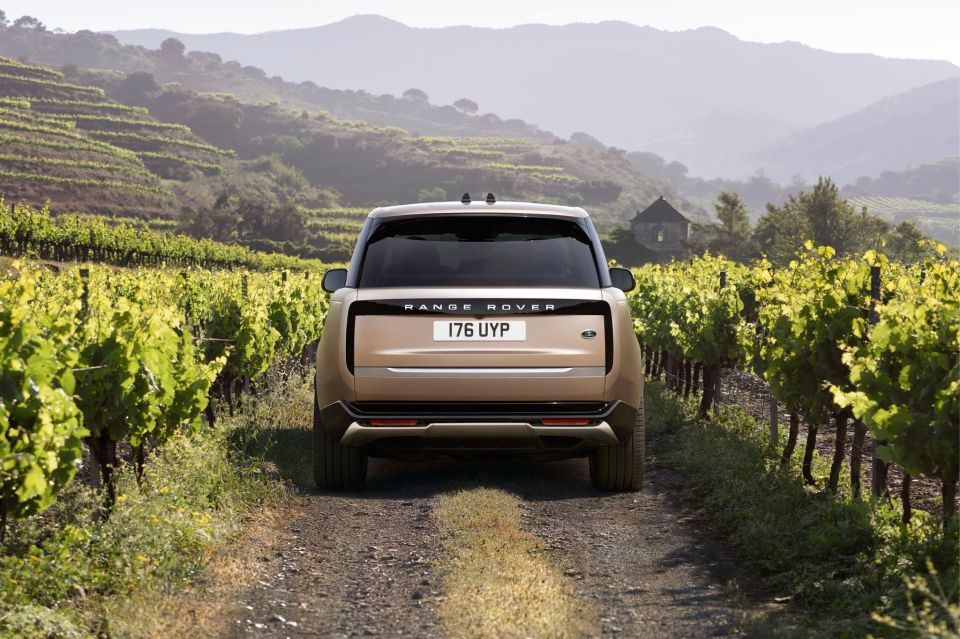

Marketplace Journalist
These large vehicles command a large upfront price tag, but that doesn’t need to mean large fuel bills for life.
To find out which large SUV drinks the least, we’ve taken the choices in the SUV upper large categories on the VFACTS sales charts and compared them based on their claimed fuel economy on the combined cycle.
There are two SUV upper large categories (less than $120,000 and more than $120,000) on the VFACTS sales charts, which we’ve chosen to combine given the limited selection in the cheaper category.

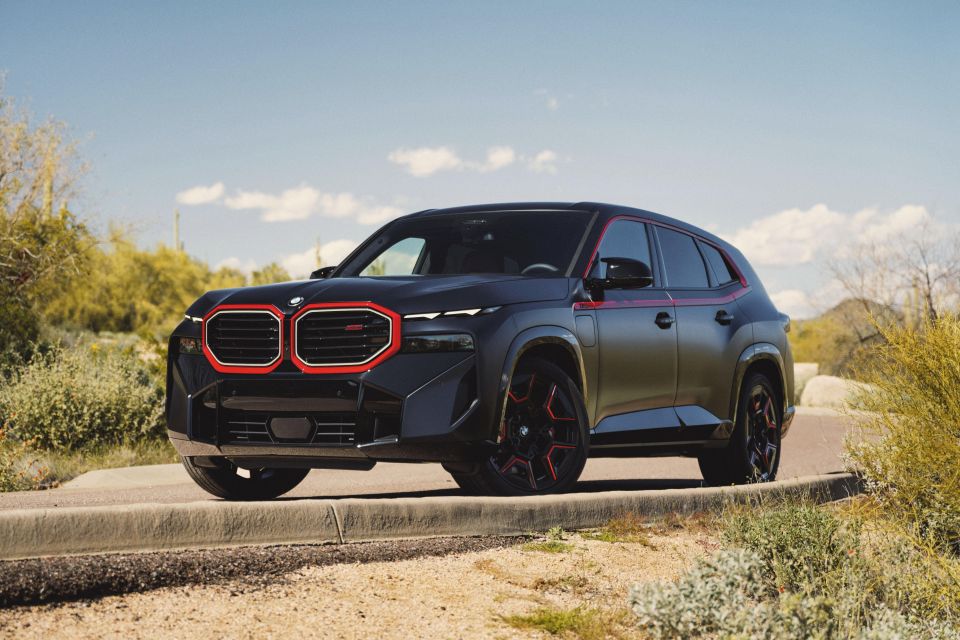
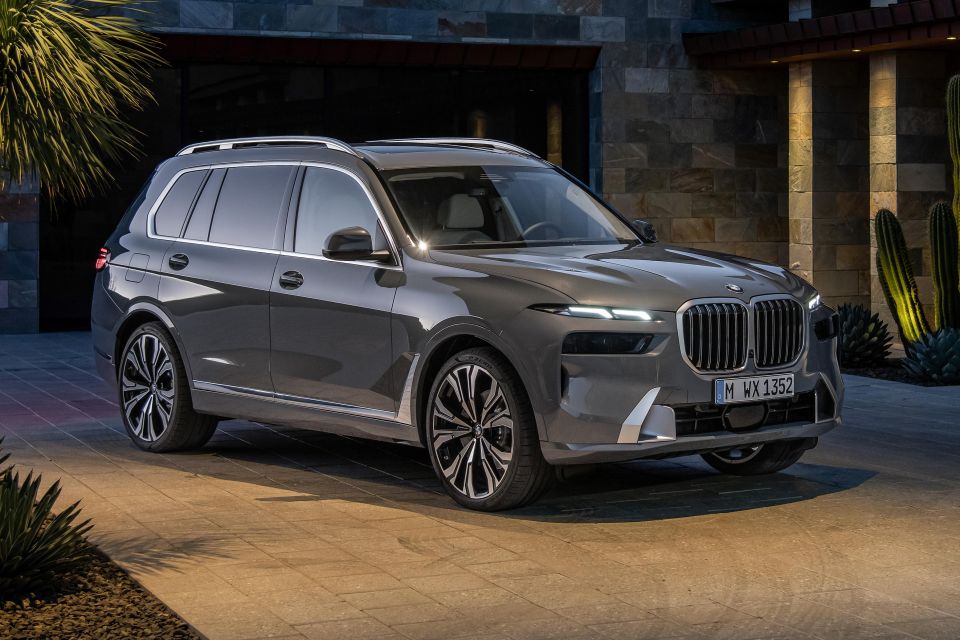

We’ve listed only the most efficient variant of each model, as different powertrains, drivetrains, and body types can cause economy figures to vary.
There are two omissions to this comparison. The first of which being the category’s two electric cars – the Kia EV9 and Mercedes-Benz EQS SUV – have been excluded because they’re… electric.
We’ve also left out the upmarket Aston Martin DBX, Bentley Bentayga, Lamborghini Urus, and Rolls-Royce Cullinan, as their volumes are significantly more limited than the vehicles listed below.
| Make/model | Fuel economy (claimed) | Fuel tank capacity | Fuel type |
|---|---|---|---|
| Land Rover Range Rover P460e HSE PHEV | 1.6L/100km | 72L | 95 RON |
| BMW XM Label Red | 1.6L/100km | 69L | 98 RON |
| Land Rover Discovery D300 | 7.5L/100km | 89L | Diesel |
| BMW X7 xDrive40d | 8.0L/100km | 80L | Diesel |
| Toyota LandCruiser 300 | 8.9L/100km | 110L | Diesel |
| Lexus LX 500d | 8.9L/100km | 110L | Diesel |
| Mercedes-Benz GLS 450d 4Matic | 9.1L/100km | 90L | 98 RON |
| Mercedes-AMG G63 | 13.1L/100km | 112L | 98 RON |
| Nissan Patrol | 14.4L/100km | 140L | 95 RON |
Click on a car’s name above to jump directly to its information on the page, or continue scrolling for the full list.
There are around 15 individual Range Rover variants and three different powertrains, but the most efficient is the one you see here.
The plug-in hybrid P460e HSE is the most efficient of the lot, with a claimed fuel economy of 1.6L/100km on the combined cycle.

That specific model will set you back $263,468 before on-road costs, and as designated by the P in its name it drinks petrol. It also packs a 38.2kWh battery, with a claimed battery-only range of 126km on the WLTP testing cycle.
You can go for a diesel engine from $258,489 before on-roads, which will buy you the D350 HSE that consumes 7.2L/100km on the combined cycle.
There are non-PHEV petrol versions available too, the cheapest of which is the P530 HSE for $290,338 before on-roads. These models have a 90-litre tank, compared to 72 litres for PHEVs and 80 litres for diesels.
| Land Rover Range Rover P460e HSE PHEV | |
|---|---|
| Fuel economy (claimed) | 1.6L/100km |
| Fuel tank capacity | 72L |
| Fuel type | 95 RON |
BUY: Get in touch with a dealer about a Land Rover Range Rover MORE: Everything Land Rover Range Rover
Next up is the BMW XM, which is the second and final PHEV car on this list. As such it’s another figure to be taken with a grain of salt, as it’s claimed to consume1.6L/100km on the combined cycle.

The two Label Red variants are the XMs with that claimed figure, which will set you back $344,200 and $349,900 before on-road costs each. These models pack a 25.7kWh battery, and claim a battery-only range of 83km.
If that’s too much to pay you can opt for the base XM, which starts at $302,200 before on-roads. It still has the PHEV powertrain with an electric-only range of between 82 to 88km.
All XMs drink 98 RON unleaded from a 69-litre fuel tank, and like the Range Rover wireless smartphone mirroring is offered as standard.
| BMW XM Label Red | |
|---|---|
| Fuel economy (claimed) | 1.6L/100km |
| Fuel tank capacity | 69L |
| Fuel type | 98 RON |
BUY: Get in touch with a dealer about a BMW XM MORE: Everything BMW XM
With the PHEV entries on this list now exhausted, there’s a sizeable jump in fuel economy with the Land Rover Discovery. With its diesel engine, it consumes a claimed 7.5L/100km on the combined cycle.

There are five turbo-diesel Discovery models on the market right now, cheapest of which is the S D300 that starts at $109,154 before on-road costs. These models also pack a 89-litre fuel tank.
If you want a turbo-petrol Discovery, there are three available. The cheapest is the R-Dynamic S P360, which is priced at $116,292 before on-roads.
The petrol models consume 9.2L/100km and require 95 RON petrol in their 90-litre tanks.
| Land Rover Discovery D300 | |
|---|---|
| Fuel economy (claimed) | 7.5L/100km |
| Fuel tank capacity | 89L |
| Fuel type | Diesel |
BUY: Get in touch with a dealer about a Land Rover Discovery MORE: Everything Land Rover Discovery
There are three X7 variants available, and like the Discovery it’s the diesel that’s most efficient. It consumes a claimed 8.0L/100km on the combined cycle.
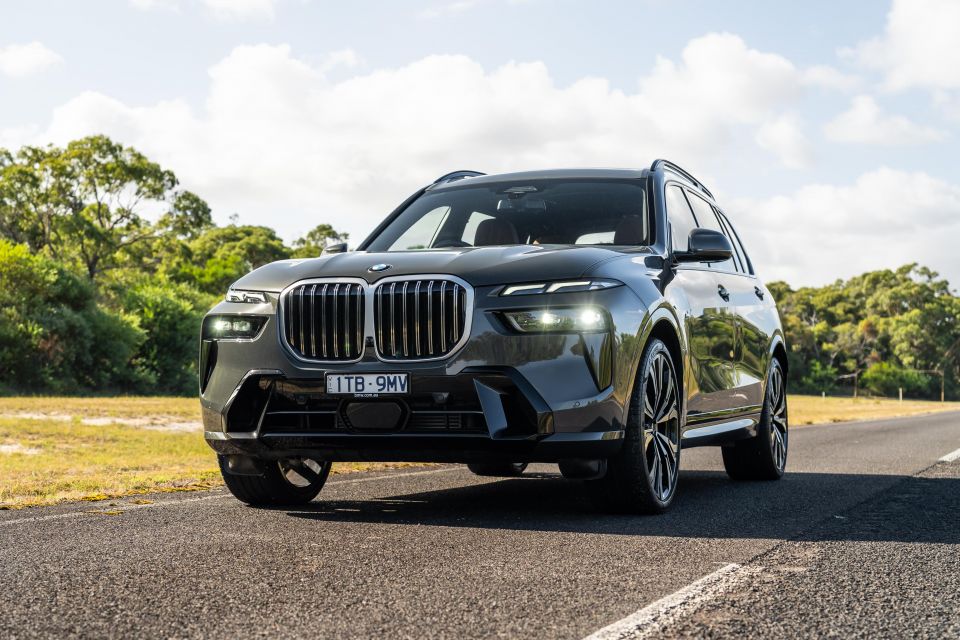
The xDrive40d starts at $174,900 before on-road costs. It has an 80-litre tank, and like the rest of the X7 range includes a 48V mild-hybrid system.
The two petrol models are the xDrive40i and the performance-oriented M60i, which are priced at $167,900 and $205,900 before on-roads respectively. Both offer an 83-litre fuel tank and require 95 RON petrol.
They’re less efficient than the diesel though. The xDrive40i consumes between 9.7L/100km on the combined cycle. That figure jumps to 12.2L/100km for the M60i.
| BMW X7 xDrive40d | |
|---|---|
| Fuel economy (claimed) | 8.0L/100km |
| Fuel tank capacity | 80L |
| Fuel type | Diesel |
BUY: Get in touch with a dealer about a BMW X7 MORE: Everything BMW X7
The first of three Japanese cars on this list is the Toyota LandCruiser 300 Series, which consumes a claimed 8.9L/100km in all its variants. It was also the best-selling car in this segment last year by around 7000 units.
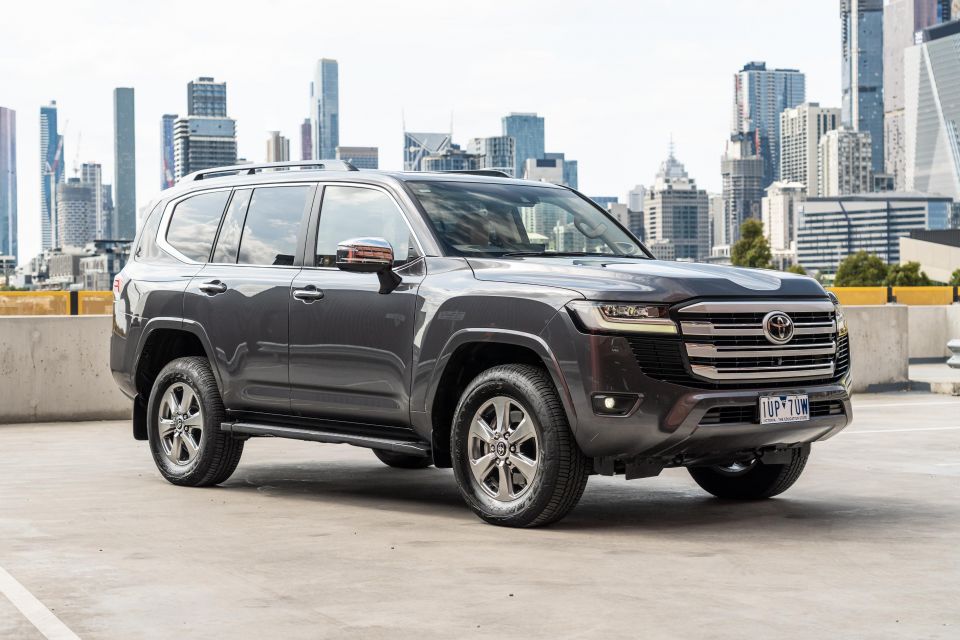
The 300 Series is offered exclusively with a 3.3-litre twin-turbo V6 diesel, which is fed by an 80-litre main fuel tank and 30-litre sub tank for a total capacity of 110 litres.
Prices range from $98,076 before on-roads for the base GX to $146,876 for the top-spec Sahara ZX. This is also the first car on this list to lack any form of hybrid tech, mild or otherwise.
| Toyota LandCruiser 300 | |
|---|---|
| Fuel economy (claimed) | 8.9L/100km |
| Fuel tank capacity | 110L (80L main + 30L sub) |
| Fuel type | Diesel |
BUY: Get in touch with a dealer about a Toyota LandCruiser MORE: Everything Toyota LandCruiser
Staying in the Toyota stable, the Lexus LX has a claimed fuel economy of 8.9L/100km on the combined cycle in its most efficient guise.
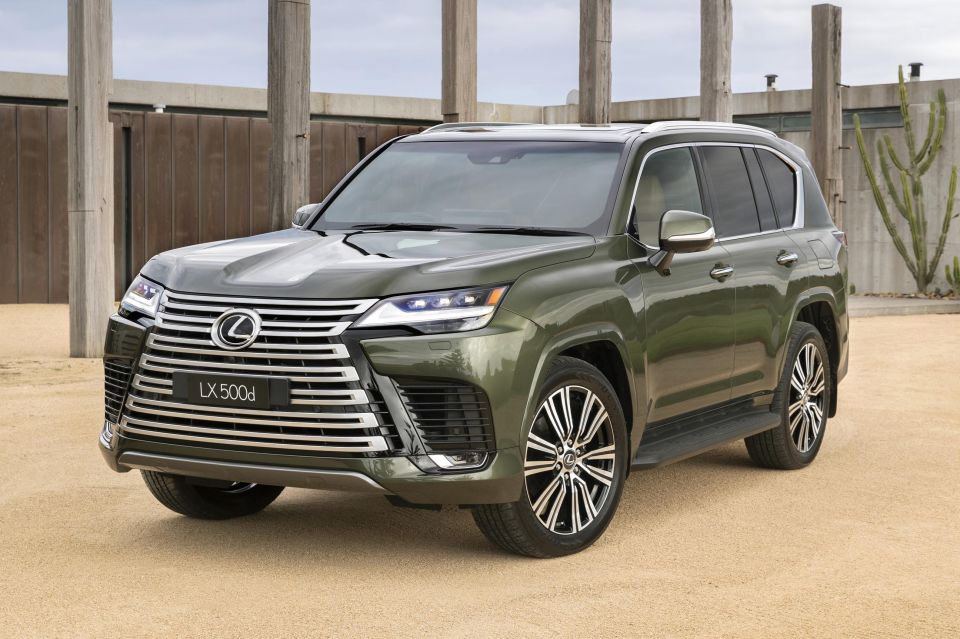
Of the seven models currently available, the three diesel models have that economy figure. Those comprise the 500d, 500d Sports Luxury, and 500d F Sport, priced at $157,061, $174,061, and $180,061 before on-roads respectively.
Every LX offers a 110-litre fuel tank except the base 500d, which has to make do with 80 litres. That means you’ll be able to travel further on a tank in the two more expensive diesel variants.
If petrol is your thing, there are four to choose from. The range starts at the 600 and tops out at the 600 Ultra Luxury, with prices ranging from $160,561 to $219,061 before on-roads. They consume an increased 12.1L/100km.
| Lexus LX 500d | |
|---|---|
| Fuel economy (claimed) | 8.9L/100km |
| Fuel tank capacity | 110L |
| Fuel type | Diesel |
BUY: Get in touch with a dealer about a Lexus LX MORE: Everything Lexus LX
The Mercedes-Benz GLS-Class takes us back to Germany, and once again it’s the diesel version that’s the most economical. It has claimed fuel economy of 9.1L/100km on the combined cycle.
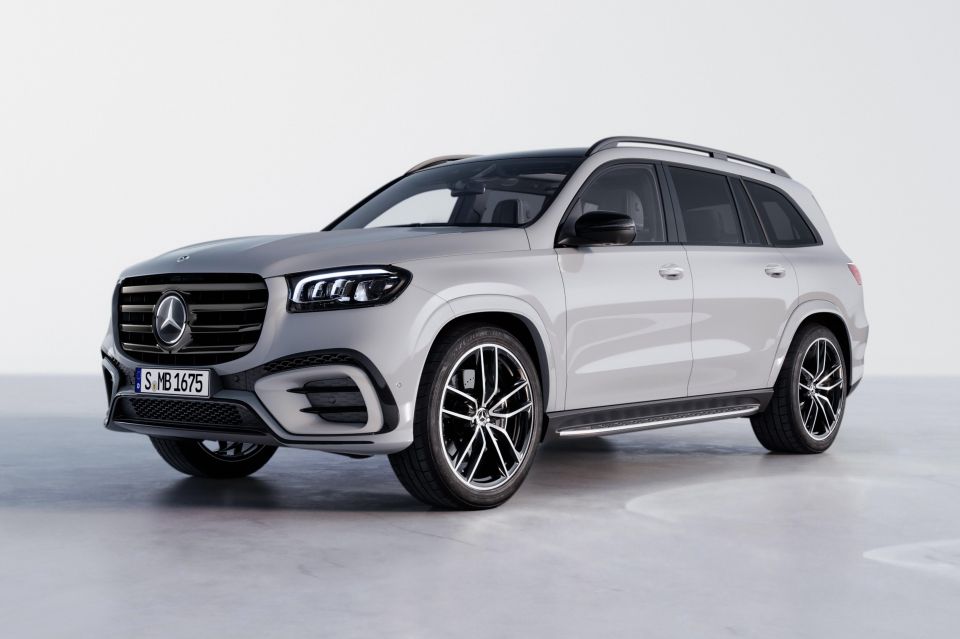
That specific model is the Mercedes-Benz GLS 450d 4Matic, which is priced at $184,900 before on-roads. It’s powered by a 3.0-litre inline-six turbo-diesel with a 48V mild-hybrid system.
The GLS also has AMG and Maybach versions available. The petrol AMG GLS 63 4Matic+ starts at $299,900 before on-roads and consumes a claimed 13.2L/100km, and is powered by a 4.0-litre twin-turbo V8 with 48V MHEV tech.
The Maybach GLS 600 4Matic shares that engine but has a worse fuel economy of 14.1L/100km. These two models drink 98 RON petrol, while the whole range offers a 90-litre fuel tank.
| Mercedes-Benz GLS 450d 4Matic | |
|---|---|
| Fuel economy (claimed) | 9.1L/100km |
| Fuel tank capacity | 90L |
| Fuel type | Diesel |
BUY: Get in touch with a dealer about a Mercedes-Benz GLS-Class MORE: Everything Mercedes-Benz GLS-Class
The iconic G-Wagen is currently only available in one variant in Australia, which offers a petrol engine with a fuel economy of 13.1L/100km.
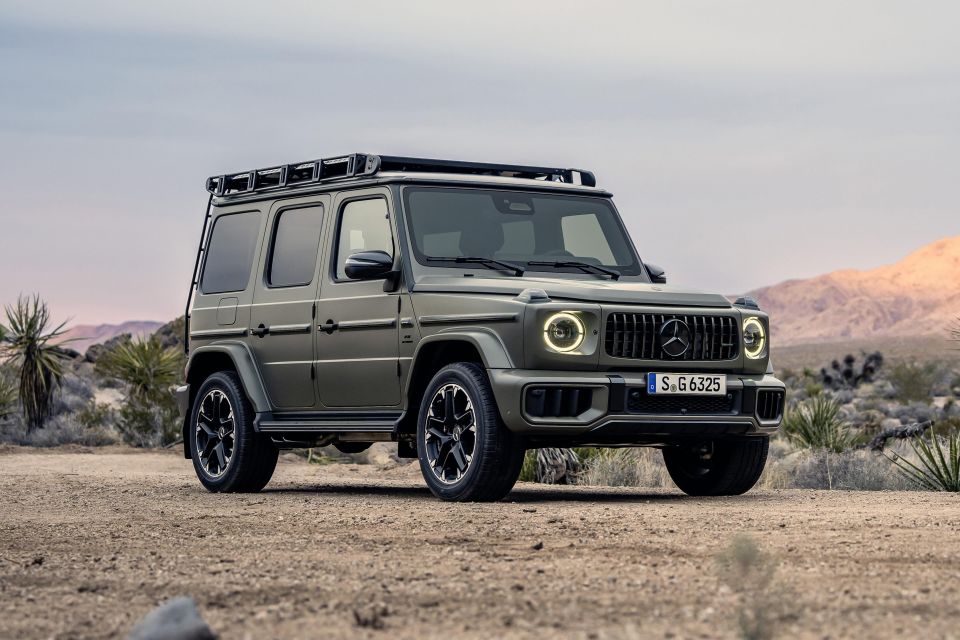
It’s the Mercedes-AMG G63, priced from $365,091 before on-roads. It packs a 4.0-litre twin-turbo V8, which when combined with its four-wheel drive system is capable of moving the car from 0-100km/h in 4.5 seconds.
The G-Wagen drinks exclusively 98 RON premium unleaded petrol from a 100-litre fuel tank. There’s also a 12-litre reserve tank included.
| Mercedes-AMG G63 | |
|---|---|
| Fuel economy (claimed) | 13.1L/100km |
| Fuel tank capacity | 100L + 12L reserve |
| Fuel type | 98 RON |
BUY: Get in touch with a dealer about a Mercedes-Benz G-Class MORE: Everything Mercedes-Benz G-Class
Last but not least is the Nissan Patrol, which unlike its LandCruiser rival is only available with a petrol engine that consumes 14.4L/100km.

The Ti, Ti-L, and Warrior variants are all powered by a 5.6-litre naturally aspirated petrol V8. They’re each priced at $87,900, $100,600, and $104,160 before on-roads, which means the base Patrol Ti is the cheapest car on this list.
All variants drink 95 RON petrol from a 140L fuel tank. There aren’t any additional tanks or hybrid tech to be seen here though.
New for 2024 is the addition of wireless Apple CarPlay and Android Auto, which will make time between fuel stops more enjoyable.
| Nissan Patrol | |
|---|---|
| Fuel economy (claimed) | 14.4L/100km |
| Fuel tank capacity | 140L |
| Fuel type | 95 RON |
BUY: Get in touch with a dealer about a Nissan Patrol MORE:Everything Nissan Patrol
Max Davies is an automotive journalist based in Melbourne, Australia. Max studied journalism at La Trobe University and stepped into the automotive world after graduating in late 2023. He grew up in regional Victoria, and with a passion for everything motorsport is a fan of Fernando Alonso.


James Wong
5 Days Ago


James Wong
5 Days Ago


Max Davies
4 Days Ago


Josh Nevett
2 Days Ago


Max Davies
2 Days Ago
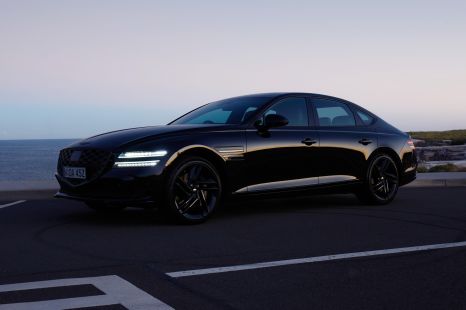

William Stopford
22 Hours Ago